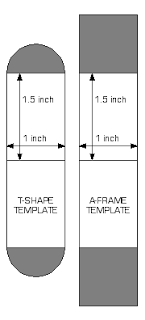As a DM I've tried a number of different approaches to both writing and running adventures, but they've always fallen into one of two camps, the LINEAR or the TIMELINE based adventure.
Linear Plots
In a linear plot the PCs go from location to location (or scene to scene), the events happen solely within their timeline. This is how most dungeon crawls are written, the party blunder into room 5 and trigger the goblin attack which they either deal with or don't, then it's off to the next room or location and so on until they end up defeating the evil archmage and rescuing the princess / orb of jozitzky (delete as applicable).
From a DMs perspective these are easy to write and to run as the PCs don't do much choosing which path through the adventure they take. However, depending on how immersed they are in the adventure, the PCs can sometimes detect the guiding hand of the DM which often led to player apathy and sometimes even rebellion. They can also feel a little formulaic (not that there's anything wrong with dungeon bashing) if that's all the DM has in their arsenal.
Timeline Plots
In a timeline adventure the PCs wander from location to location but the events have a life of their own and can be triggered by the PCs, NPCs, the villain or even other events. Often these are decided by an overarching game timeline, for example; at noon a fight breaks out in the marketplace, by 1pm the marketplace is cordoned off by the local sheriff, by 1:30 the aggrieved parties have been carted off to the local gaol, by dawn they are all executed.
As DM you need to be aware of where the PCs are in relation to the EVENTS and any travelling time it might take them to get there, the time it takes for players to deal with an EVENT and argue about what to do next etc. These are, on the whole, much more of a challenge to write and to DM but often more rewarding for players and DM alike for a number of reasons.
I find that some settings naturally lend themselves to timelines. Of particular note are Judge Dredd and Cyberpunk, both of which are set in an urban sprawl:
Judge Dredd: The adventure timeline is usually crafted around a single perp's attempts at either committing a number of minor crimes escalating in scale and severity which (if the PCs follow the clues) will end up in a final showdown or one big crime and then the perp tries to cover their tracks.
When I write my own adventures I pepper the timeline with lots of other events so the players have to decide which crimes are linked together in order to decide what to react to and which ones are set fressing or red herrings.
The fact that the PCs are often street judges on patrol (but in constant communication with Justice Central) helps with the planning the events in a more linear way and allows you to communicate alerts and demand responses from the PCs to things that they hear on their radios.
Cyberpunk: The adventure timeline is usually crafted around the nefarious actions of a corporation or some other organisation. The PCs interact with these events through various intermediaries or connections and may end up either working for or against the organisation at the heart of the plot.
PCs are usually updated throughout the game with regular screamsheets and media broadcasts giving the players a sense of their insignificance in the world and (as I like to do) coverage of the effects of their actions from the opposite perspective. The job for the PCs is to work out where they fit into all this and if they can or even should put a stop to it.
Communication is Key
One of the keys to running a timeline scenario is that the players need to be regularly made aware of events outside their immediate sphere. In modern or sci-fi games this is usually not a problem as PCs usually have access to mobile phones or similar which you can use to appraise them of things happening in other locations.
In fantasy games this can be tricky as long distance communication is usually impossible unless the PCs have access to a magical artifact, spell or reliant on messenger birds. In a city setting this is much easier due to the shorter distances involved. You might get word of something happening on the other side of the city passed by word of mouth but this could suffer from Chinese Whispers and the actual details of the message get corrupted. Alternatively you could have a fixer or a patron act as the party messenger using runners to get information to the PCs as swiftly and reliably as possible.









